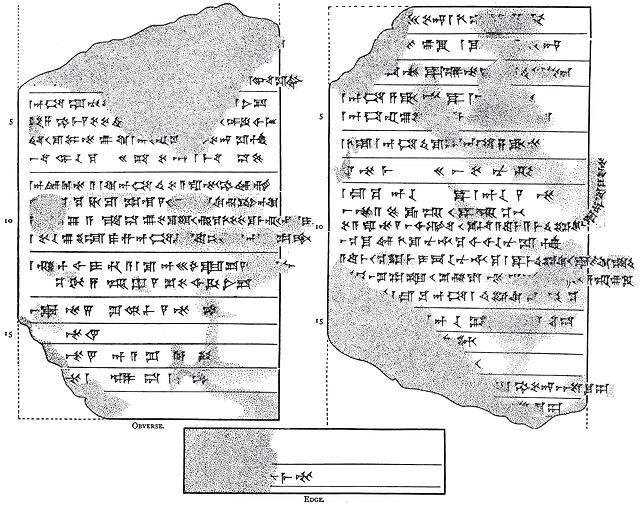Nabû-nāṣir was the king of Babylon from 747 to 734 BC. He deposed a foreign Chaldean usurper named Nabu-shuma-ishkun, bringing native rule back to Babylon after twenty-three years of Chaldean rule. His reign saw the beginning of a new era characterized by the systematic maintenance of chronologically precise historical records. Both the Babylonian Chronicle and the Ptolemaic Canon begin with his accession to the throne. He was contemporary with the Assyrian kings Aššur-nirarī V and Tiglath-Pileser III, the latter under whom he became a vassal, and the Elamite kings Humban-Tahrah I and Humban-Nikaš I.
King's line art for the Eclectic Chronicle, BM 27859, a post-Kassite chronicle of Mesopotamian history
Chaldea was a small country that existed between the late 10th or early 9th and mid-6th centuries BC, after which the country and its people were absorbed and assimilated into the indigenous population of Babylonia. Semitic-speaking, it was located in the marshy land of the far southeastern corner of Mesopotamia and briefly came to rule Babylon. The Hebrew Bible uses the term כשדים (Kaśdim) and this is translated as Chaldaeans in the Greek Old Testament, although there is some dispute as to whether Kasdim in fact means Chaldean or refers to the south Mesopotamian Kaldu.
Eurasia around 1000 BC, showing Babylon, Assyria, Aramean states and their neighbors
Eurasia around 600 BC, showing Neo-Babylonian Empire (Chaldean Empire) and its neighbors



